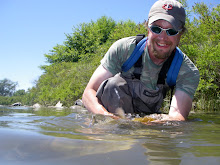Dude, where's the sink?I was clicking along, driving south the other night... crossing the watershed boundary from the Cannon into the Zumbro... enjoying a calm and quiet evening, when my two bit radio in my one-eyed car clicked onto a FOX talk show. The host was a woman named XXX Jeffers I think. She was pretty entertaining to her own person, and a lot of words flowed from her mouth, across the airwaves and into my ears. She doesn't like President Obama, and in fact she doesn't like "the liberals" much either... Which is fine I guess. However, one thing she mentioned as a core of her displeasure with said party is something I've heard before, and has always bugged me:
taxes take money out of the private sector.
What I need now, is a rationale explanation of how that can happen. It's precisely what she said, and it seems I hear that fairly often. Here are my observations:
Government agencies use tax dollars for these purposes:
(1) Pay employees. Thus, this money goes back to the private sector.
(2) Contract with private entities for work - same deal - back to private sector.
(3) Buy stuff - equipment, supplies, etc. - back to private sector.
(4) Overhead, utilities - back to private sector.
(5) Employee benefits - health care, retirement - back to private sector.
I'm stating the obvious here... But what am I missing? How can you make the claim that the government takes money out of the private world? It's a pass through - nothing more. So back to the original question: Dude, where is the money sink? The gov doesn't
eat any dough.
You could put forth an argument that government doesn't always make wise decisions when it comes to how to put tax dollars back into the private sector. Still though, it's hard to paint that as "waste" because the money doesn't disappear - it still serves in the private world... just some private entity other than the complainer got some extra. This happens all the time in private to private transactions - bad decisions and overpayment for a service or good... common occurence.
So I guess my point is that government doesn't "take" any money. It funnels it to projects that it deems necessary, according to the guidance of legislators, who in theory are to be guided by constituents. It's a funnel, not a pit.
Ranting a bit... but it came to a head when I read
this article. I haven't talked to any fisheries guys on this yet, and to be honest I don't have an informed opinion on whether or not this would be a good thing. Some of the knee jerk I've heard though is that yes - surely it would be good to get this to the hand of the private sector - away from wasteful government spending. Well - maybe speculate on what would happen:
Currently, the state of MN funnels tax dollars to the hatchery program to raise and stock fish in our waters. State employees are paid an average to maybe below average wage to do the work involved. There is no "retail" cost for the fish once they are ready to stock. The state can set policy to use the best science to raise the best and most appropriate fish for our waters. They have access to the most up to date information regarding fish diseases and genetics. That's about as much as I can figure.
If we privatize hatcheries: the State of MN would likely put the work out for bid. Once the contract were awarded, the goal of the contractor would inevitably be reduced to the core principle of the capitalist: how can I meet the minimum requirement of my contract, while spending the least amount of money, so I can bankroll the gravy (because the contract is set). Thus, shortcuts may be used, and care for the "final product" may be lacking.
The comparison outlined above is based on the assumptions that (1) gov employees in the fisheries world care for their work and "their" fish and that they conduct their jobs with integrity, despite getting pay that is not glamorous, (2) private entities MAY care for their work and "their" fish, but there is a greater probability that they will NOT do so, but rather they will be focused on maximizing profit and the "retail" cost of the fish they grow.
I believe that those assumptions are generally and loosely sound. They wouldn't be so in every case, but my observations suggest that they're safe bets.
Anyway, to circle back to the front of the conversation - just for a second, I thought maybe hatchery fish were one of the few true "sinks" for tax dollars: we pay big money to raise them, and it comes back to us in the form of a product - one of the few things you could claim that the gov actually "produces." But that was just a second of thought... then came the fact that those fish drive huge private expenditure - cars, boats, rods, reels, etc. - the billions spent each year in the private sector... so the bills turn to fish flesh that swims and breathes and eats bugs... and that fish flesh maintains tangents that dust off savings and circulates them through the cash registers and pixels on computer screens and old leather wallets, etc. etc. Money fish money fish, money fish.
If we privatize the hatcheries, I think we should install a contract stipulation that all payment be in the form of 10 kronur pieces - the coin that honors the pisces by featuring an image of four capelins. This coin here sits on my dresser top. Lucky fishy coin money.
.jpg)
.jpg)
.jpg)
.jpg)
.jpg)
.jpg)
.jpg)
.jpg)
.jpg)
.jpg)
.jpg)
.jpg)
.jpg)
.jpg)
.jpg)












.jpg)
.jpg)
.jpg)
.jpg)
.jpg)
.jpg)
.jpg)
.jpg)
.jpg)
.jpg)
.jpg)
.jpg)
.jpg)
.jpg)
.jpg)
.jpg)
.jpg)
.jpg)
.jpg)

